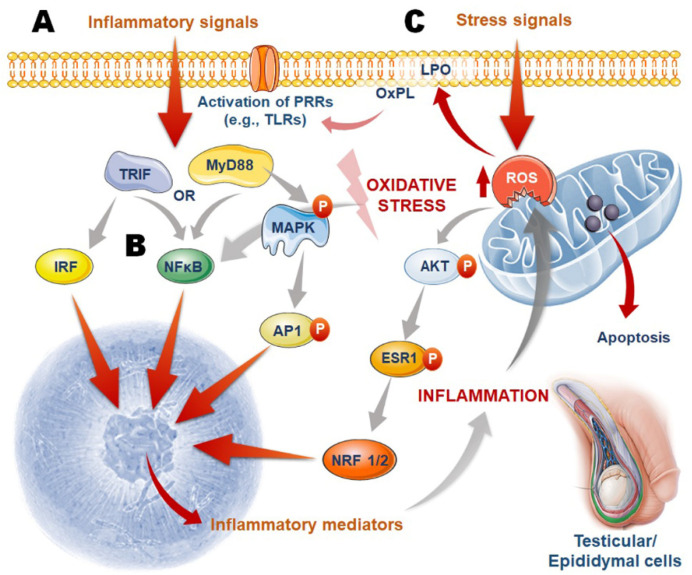Figure 2.
Cellular pathways connecting inflammation and oxidative stress (OS) in the pathogenesis of male infertility. (A) Pattern recognition receptors (PRRs) in testicular and epididymal cells are activated by inflammatory stimuli. The activated PRRs trigger downstream signalling via the Myeloid differentiation primary response (MYD88) and mitogen-activated protein (MAP) kinases pathways (IRF3); (B) These cascades activate transcription factors such as the nuclear factor kappa light chain enhancer of activated B cells (NF-kB), activator protein 1 (AP-1), and interferon regulatory factor 3 (IRF3); (C) Excess ROS production, on the other hand, can cause oxidation of membrane phospholipids and intracellular proteins, which can activate the PRRs-inflammatory pathway. Furthermore, ROS can activate the transcription factors nuclear respiratory factor (NRF) 1 and 2 via AKT (Protein Kinase B) and estrogen receptor (ESR) 1. These activated transcription factors induce the expression of inflammatory mediators such as tumour necrosis factor α (TNFα), interferons (IFNs), interleukin (IL) 1, nitric oxide (NO), and tumour growth factor (TGF) B3, which cause exaggerated inflammation and can also act as OS stimuli, creating a feedback loop. OS can also initiate apoptotic cascades by assisting the release of cytochrome-c (Cyt-c) from mitochondria.

